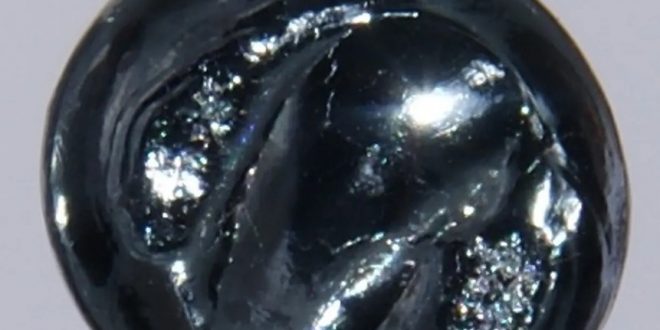Certain asteroids possess a high density. The study on mass density suggests that these objects may contain heavy elements that are not found in the periodic table.
The physicists from the University of Arizona were driven by the potential of compact ultradense objects (CUDOs) that possess a mass density surpassing that of osmium, which is the densest naturally occurring, stable element with its 76 protons.
“Certain asteroids have been found to exceed this threshold for mass density.” The team’s study highlights the asteroid 33 Polyhymnia, noting its significant mass density that surpasses that of familiar atomic matter. This finding classifies it as a CUDO with an unknown composition.
The team examined the characteristics of potential elements that possess atomic numbers (Z) greater than the highest atomic number found in the existing periodic table. Osmium is known for its high density, being the densest stable element. However, through experimental methods, elements with even higher atomic numbers have been successfully created.
Oganesson was first synthesized in 2002 through the bombardment of californium-249 with calcium-48 atoms. It possesses an atomic number of 118 and is recognized as the densest element in the periodic table. Elements found towards the upper portion of the periodic table generally display characteristics of instability, radioactivity, and remarkably brief half-lives.
Upon examining the remaining elements in the periodic table, scientists were unable to identify any elements with sufficiently high mass densities to account for the reported characteristics of asteroid 33 Polyhymnia. Furthermore, even if such elements were stable enough to be regarded as potential candidates, they were not found.
“The team stated that the elements in the theoretical island of nuclear stability near Z = 164, which are expected to have mass density values between 36.0 and 68.4 g/cm3, are plausible candidates.” “If a substantial portion of the asteroid consisted of these superheavy metals, it is conceivable that the increased mass density could align closely with the value measured in experiments.”
“Based on our findings regarding mass density, we can propose that if superheavy elements possess enough stability, they might be present in the central regions of compact asteroids such as 33 Polyhymnia,” the researchers said in their publication.
Although early, this development is still captivating for individuals ranging from those with a general curiosity in physics to technology entrepreneurs with aspirations for extraterrestrial resource extraction.
“All super-heavy elements, whether they are highly unstable or simply not yet observed, have been collectively referred to as ‘unobtainium’,” said Jan Rafelski, a co-author of the work, in a news release. “The prospect of obtaining some of these objects from within our solar system, which may be stable enough, is highly thrilling.”
The research is published in The European Physical Journal Plus.
 Tech Gadget Central Latest Tech News and Reviews
Tech Gadget Central Latest Tech News and Reviews




